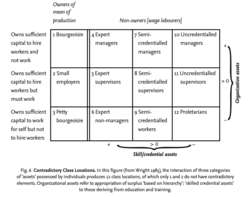
Fig. 6 Contradictory Class Locations. In this figure (from Wright 1985), the interaction of three categories ofassets’ possessed by individuals produces 12 class locations, of which only 1 and 2 do not have contradictory elements. Organizational assets refer to appropriation of surplus ‘based on hierarchy’: ‘skilled credential assets’ to those deriving from education and training.
contradictory class locations
non-polarized class locations’, i.e. ‘class locations within capitalism that are neither exploiters nor exploited’ (Wright, 1985.1989). As such, these are broadly equivalent to the Marxian conception of INTERMEDIATE CLASSES OR INTERMEDIATE STRATA, but these are given greater systematization by Wright, who seeks to provide a theory of potential ‘class alliances’ on this basis. The chief addition in Wright's analysis, compared with earlier ones, is that he takes into account what he terms ‘organizational assets’ and ‘skill assets’ (e.g. educational credentials) as well as more conventional ‘assets in the means of production’. Twelve main class locations are identified in this way (see Fig. 6). Wright examines empirical variations in political attitudes in terms of these schema, although some critics have argued that his approach is ‘over-formalistic and classificatory’.Collins Dictionary of Sociology, 3rd ed. © HarperCollins Publishers 2000